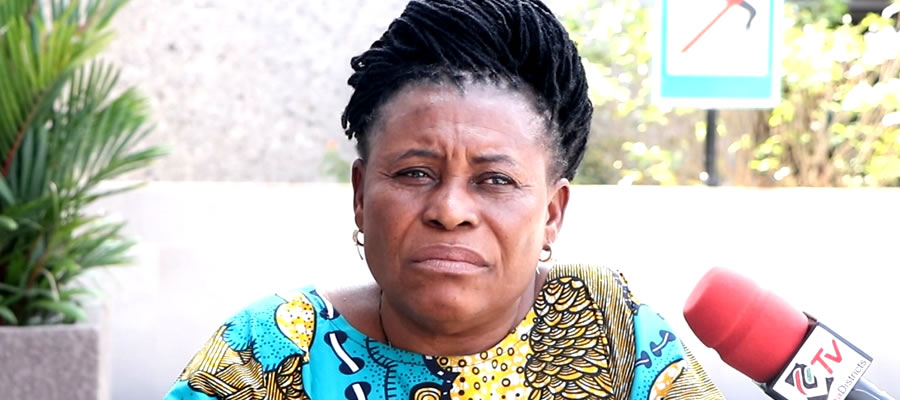

The main economic activity in the district is agriculture and its related trade. About half (52%) of the economically active population are engaged in this activity. It is estimated that half (49%) of the population in the district is within the low-income bracket as compared to 39% nationwide. Agriculture in the district is predominantly on small- holder basis and therefore subsistence. The average farm size is 1.8 hectares. The main system of farming is the traditional system of slash and burn with the use of hoe and cutlass. There is little mechanised farming. Agriculture production depends on rainfall and varies with the amount and distribution of rain.
Those in irrigated farming mechanise their land tillage and mostly use furrow or flooding method in irrigating their farms. The South Tongu Education District has seven (7) circuits. It has 68 kindergarten, 90 primary, 43 Junior Secondary, 2 Senior Secondary and 1 Technical vocational schools.
Out of a total of one hundred and seven (107) classrooms at the Pre-School level, fifty-four (50.4%) were built with cement. The rest were of mud or were iether shed, were either shed, open air or walled pavilion. Sogakofe circuit had the highest numoer classrooms, sixteen (16), constructed of cement. As many as thirteen (13) classrooms in the Danyikpo Circuit were under sheds.
There are 25898 economically active persons in the district out of which majority are engaged in the informal sector. Most women (87.1%) are engaged in the informal sector. Males predominate in the following four occupational categories, Professional/ Technical and related trade, Administration/ Managerial, Clerical and related workers and "Others". A total of 11794 of the population made up of 5126 males and 6668 females are economically inactive.
Majority of the people are self-employed with women dominating. Males employ more people than females. Statistics in the district also shows that the Tivats Informal sector ennanes 8 out of 10 working people while private sector, as a whole, employs 9 out of 10 people in the district.
Financial sector
Internal Revenue Sources
The District’s Internal Revenue sources are mainly taxes and fees on landed and other properties as well as various businesses undertaken in the district. They are classified in broad categories covering Rates, Fees and Fines, Land, Licenses, Rent, Investment and Miscellaneous. The Table in pdf file gives the trend of Total Revenue over the period 2003-2005. From a level of 0295.397 million in 2001, total revenue rose to 0335.900 million, an increase of 13.7%. There was however a decrease of 6% in revenue during 2003 over the 2002 revenue collected. This is attributed to the break down of most of the vehicles .used in mobilising revenue Percentage increase in revenue from 2003 has been 40% and 3.3% respectively.
Over the period, increases were mainly recorded in Fees and Fines, from 0104.443 million in 2001 to 0268.064 million in 2005; Rates from 08.108 million to 017.170 million; Licences from 013.059 to 054.768 all over the same period. Rent, on the other hand, dropped from 069.650 million in 2001 to 032.801 million in 2005, Land from 026.290 to 023.399 inn 2005. More effort should be put in the collection of Land, Rent and Investment. The trends recorded by various components of Total Revenue suggest that abundant potential exists for the District Assembly to increase its internal revenue generation.
External Revenue Sources
The major sources of External Revenue for the South Tongu District Assembly are Grants in Aid, the District Assemblies Common Fund (DACF), Danida funded Transport Sector Programme Support Phase II, Danida Funded Community Water and Sanitation Programme, Micro Projects Programme, Village Infrastructure Project (VIP) and Community Based Rural Development Project.
The external revenue funds by far outweigh the internal revenue, but the former could be unpredictable and unsustainable and hence provide no guarantee for the DA not to strengthen its revenue base. At best, the External Revenue sources should be structured to supplement the District Assembly’s own efforts and revenue generation.
Actual alongside Estimated or budgeted expenditure at the beginning of each year for all components or categories. Actual expenditures over the period have always been below estimated expenditures. Over the period 2003 to 2005, total expenditure rose significantly from 0790.29 million to 05,221.81 million which means more money is actually available to address the district’s increasing needs. Over the period too, capital expenditure and personal emoluments consistently constituted the major components of expenditure. In 2003, the two items took 88 percent of the total expenditure. This figure rose to 94% in 2005. It is gratifying to note that the proportion of capital expenditure has risen while that of personal emoluments had decreased.
Date Created : 11/23/2017 3:46:39 AM









 facebook
facebook
 twitter
twitter
 Youtube
Youtube
 +233 593 831 280
+233 593 831 280 0800 430 430
0800 430 430 GPS: GE-231-4383
GPS: GE-231-4383 info@ghanadistricts.com
info@ghanadistricts.com Box GP1044, Accra, Ghana
Box GP1044, Accra, Ghana